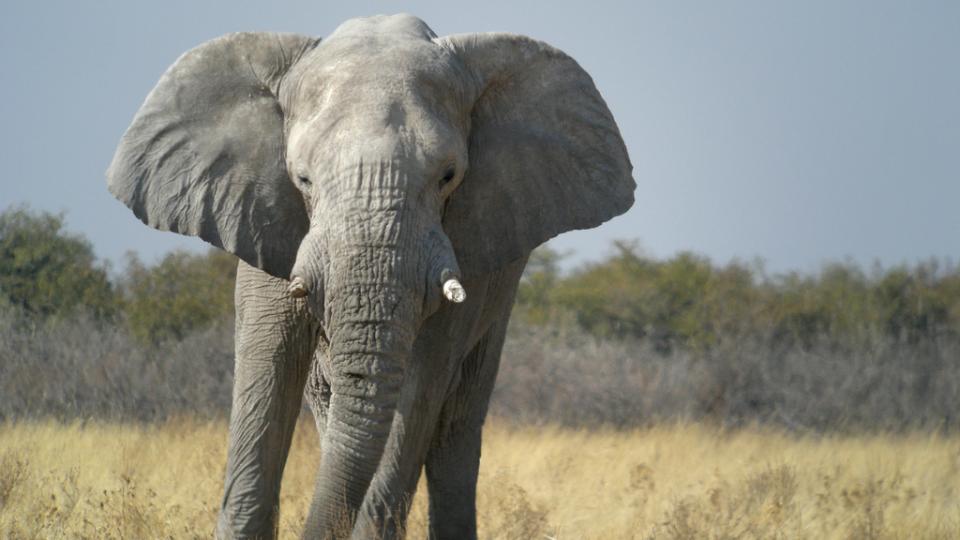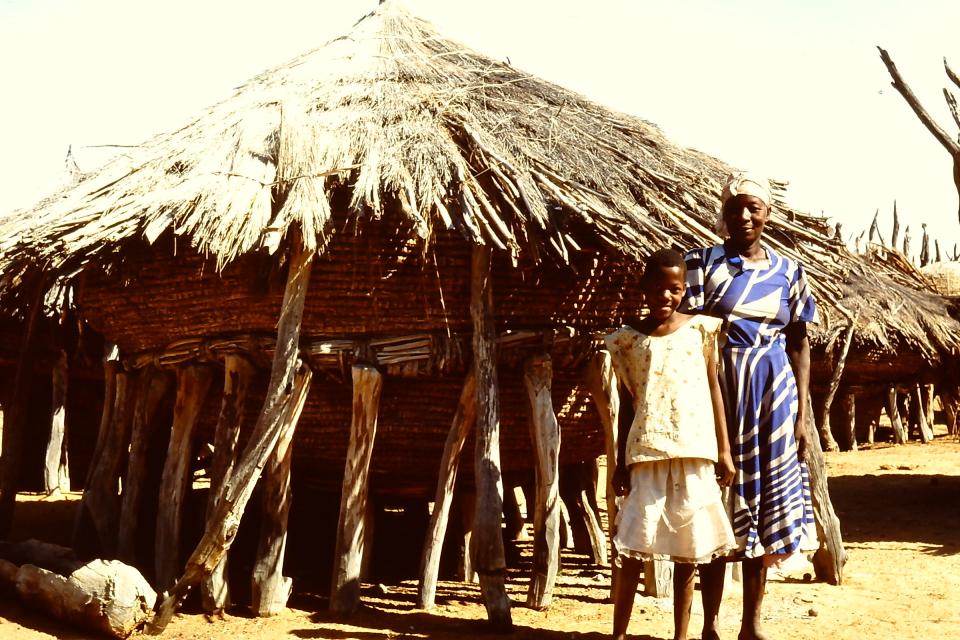In general, colonial conservation policies and practices in Africa have been viewed positively with respect to their environmental impact in safeguarding Africa’s fauna and flora, even as the objectives of the colonial administrations and their methods of preserving natural resources have been condemned as exploitative and destructive. Administrations used conservation to limit Africans’ access to land, game, and other key commercial and subsistence resources to facilitate political control over subject populations and to force them into wage labor dependency. Colonial officials liberally employed force to protect flora and fauna and exacted draconian punishment to those caught breaking conservation regulations.

Elephant, Etosha National Park, Namibia
Elephant, Etosha National Park, Namibia
Photo by Frank Vassen (2009).
Click here to view Flickr source.
 This work is licensed under a Creative Commons Attribution 2.0 Generic License.
This work is licensed under a Creative Commons Attribution 2.0 Generic License.
In north-central Namibia (known as Ovamboland) between the 1920s and 1940s, colonial conservation was effective in slowing down the decline of wildlife populations caused by animal diseases (e.g., rinderpest) and decades of overhunting. The colonial administration created the Etosha Game Preserve, prohibited the hunting of the Big Five throughout the region, and disarmed the population of Ovamboland. The confiscation of thousands of advanced firearms by the colonial administration greatly reduced the effectiveness of African hunting. As a result, elephants, lions, and large herds of wildebeest and zebra reappeared in the region. Ironically, the resurgent wildlife populations contributed to severe deforestation. Without firearms, and the colonial officials’ unwillingness to intervene, villagers continued to rely on elaborate wooden palisades and fences to protect themselves and their food reserves, crops, livestock, and precious water stores against marauding elephants, lions, leopards, and wild dogs. Human-wildlife conflict was frequent. For example, on 27 December 1949, the Ondonga King Kambonde reported that four elephants that had entered his district damaged crops and water holes. He witnessed an elephant barging into the homestead of his neighbor, an elderly woman, and tearing open a large mud-plastered grain storage basket, depriving her of the food reserves she needed to survive the long dry season. Around densely-populated Ondangwa, woody vegetation was scarce and fences were far less secure. The woman probably lacked the resources or strength to maintain an effective palisade or fence to protect her home and food stores. Wildlife not only threatened livelihoods; sometimes, lives were at stake. In September 1953, a blind woman, a child, and an elderly man were killed by elephants in Ongandjera district.
The construction and maintenance of game-proof palisades and fences constituted a major drain on woody vegetation and labor resources. Moreover, internal migrants and large numbers of refugees from neighboring southern Angola resettled in Ovamboland and constructed numerous new palisades and fenced farms, cutting down much of the woody vegetation in the places where they established new villages. New villages infringed on wildlife habitat, causing further human-wildlife conflict. Contemporary observers, including colonial officials and missionaries who noted the deforestation caused by the extensive use of elaborate palisades and fences, were greatly alarmed by the prospect of catastrophic desertification: the 6,000 new households established by Angolan refugees in Ovamboland between 1915 and 1933 alone would have led to the deforestation of at least 6,000 hectares.

View of the inside of a palisaded homestead in 1992. The palisade poles between the two men are recycled poles from the palisade surrounding the original homestead which was constructed in the 1920s, when the threat of wild animals was still real. Today’s palisade, which is seen in the background, is much lower, reflecting the fact that when it was built during the 1980s, poles were increasingly scarce and predators were no longer a threat to this village.
View of the inside of a palisaded homestead in 1992. The palisade poles between the two men are recycled poles from the palisade surrounding the original homestead which was constructed in the 1920s, when the threat of wild animals was still real. Today’s palisade, which is seen in the background, is much lower, reflecting the fact that when it was built during the 1980s, poles were increasingly scarce and predators were no longer a threat to this village.
Photo by Emmanuel Kreike.
 This work is licensed under a Creative Commons Attribution-NonCommercial-ShareAlike 4.0 International License.
This work is licensed under a Creative Commons Attribution-NonCommercial-ShareAlike 4.0 International License.
There is an extensive body of literature adopting a political ecology approach that discusses how colonial nature conservation policies aimed at extending political, social, and economic control over subject populations and highlights the resulting loss of livelihood. This literature characterizes the colonial “nature state” as either steamrolling its indigenous victims or as paralyzed by indigenous resistance or bogged down by its miscomprehension of local environmental conditions. In north-central Namibia, the “nature state” proved weak in some realms, but strong and hegemonic in others, even as its policies had sometimes unintended consequences. The colonial state’s effectiveness on the ground expanded and contracted over time, suggesting the need to differentiate the nature state in time and place, even within one particular region.

Grain storage basket in 1992. Grain and other foods could be stored for up to five years in these baskets which were sealed on the inside and at the top with clay. Typically, the storage basket was located within a homestead’s palisade to protect its valuable contents from marauding animals.
Grain storage basket in 1992. Grain and other foods could be stored for up to five years in these baskets which were sealed on the inside and at the top with clay. Typically, the storage basket was located within a homestead’s palisade to protect its valuable contents from marauding animals.
Photo by Emmanuel Kreike.
 This work is licensed under a Creative Commons Attribution-NonCommercial-ShareAlike 4.0 International License.
This work is licensed under a Creative Commons Attribution-NonCommercial-ShareAlike 4.0 International License.
How to cite
Kreike, Emmanuel. “Wildlife Conservation Causes Deforestation in Colonial Namibia.” Environment & Society Portal, Arcadia (2015), no. 15. Rachel Carson Center for Environment and Society. https://doi.org/10.5282/rcc/7308.
ISSN 2199-3408
Environment & Society Portal, Arcadia
 This work is licensed under a Creative Commons Attribution-NonCommercial-ShareAlike 4.0 International License.
This work is licensed under a Creative Commons Attribution-NonCommercial-ShareAlike 4.0 International License.
2015 Emmanuel Kreike
This refers only to the text and does not include any image rights.
Please click on an image to view its individual rights status.
- Beinart, William and JoAnn McGregor (eds.). Social History and African Environments. Oxford: James Currey, 2003.
- Carruthers, Jane.The Kruger Park: A Social and Political History. Pietermaritzburg: University of Natal Press, 1995.
- Jacobs, Nancy J. Environment, Power, and Injustice: A South African History. Cambridge: Cambridge University Press, 2003.
- Leach, Melissa, and Robin Mearns (eds.). The Lie of the Land: Challenging Received Wisdom on the African Environment. Oxford: James Currey Ltd, 1996.
- McCann, James C. Green Land, Brown Land, Black Land: An Environmental History of Africa, 1800-1990. Portsmouth: Heinemann Educ Books, 1999.
- Neumann, , Roderick P. Imposing Wilderness: Struggles over Livelihood and Nature Preservation in Africa. Berkeley: University of California Press, 2000.
- Showers, Kate Barger. Imperial Gullies. Soil Erosion and Conservation in Lesotho. Athens: Ohio University Press, 2005.








